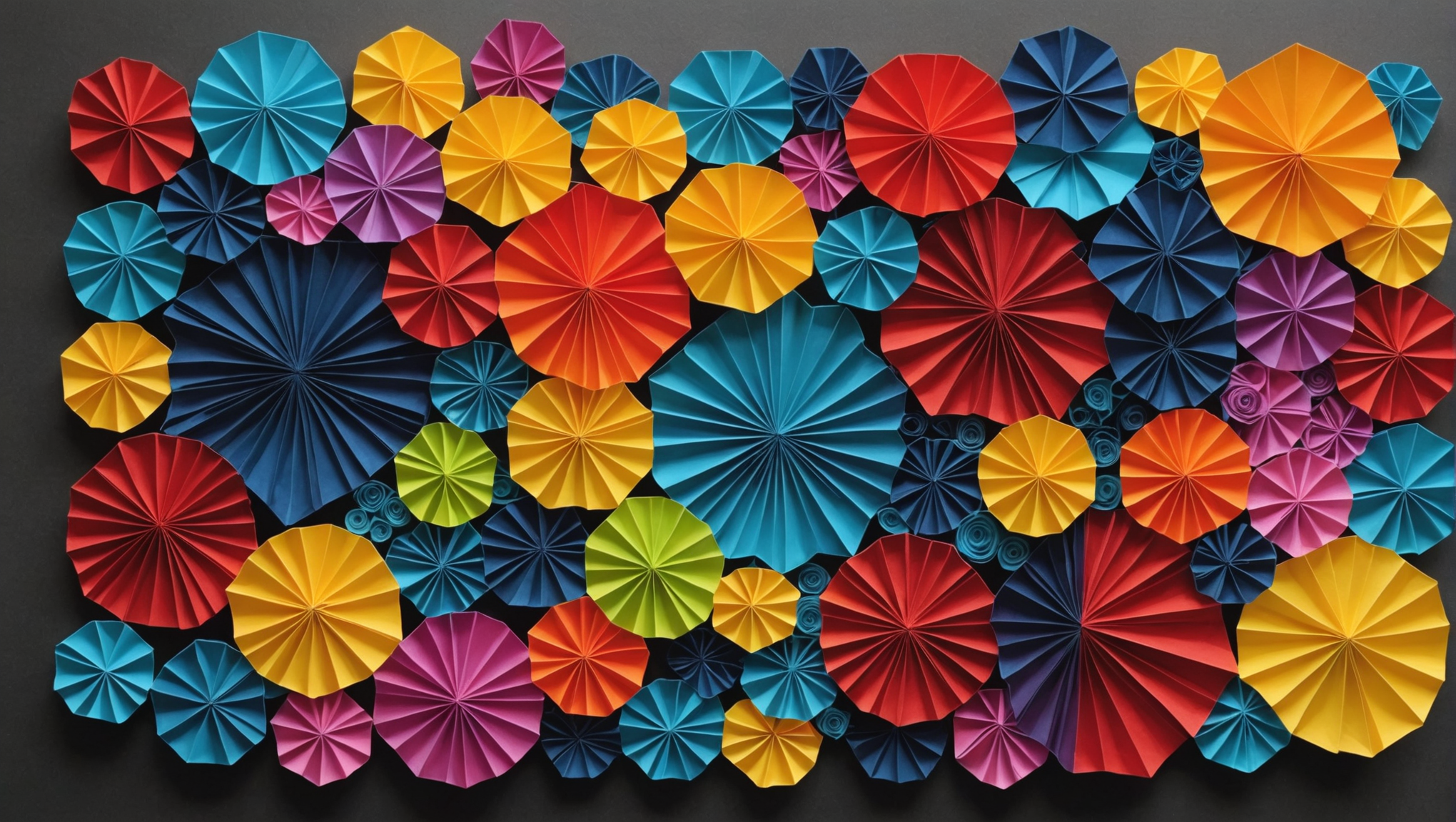
Fully connected layers, also known as dense layers, are fundamental building blocks in neural networks. They function by connecting every input neuron to every output neuron, allowing the network to learn complex representations of the input data. In a fully connected layer, each input is assigned a weight, and the output is computed as a weighted sum of these inputs passed through an activation function.
The mathematical representation of a fully connected layer can be described as follows:
# Given inputs vector `x` and weights matrix `W`, and bias vector `b` output = activation_function(np.dot(x, W) + b)
Where:
- x is the input vector.
- W is the weights matrix.
- b represents the bias term.
- activation_function is a non-linear function applied to introduce non-linearity.
In practical applications, fully connected layers are typically used towards the end of a neural network after several convolutional or recurrent layers. They condense the learned features into a final output, which could represent class probabilities or regression outputs, depending on the specific problem being addressed.
Fully connected layers are characterized by the following properties:
- Their ability to model complex relationships in the data is a strength, but also a source of overfitting if not managed well.
- They often require flattening of input tensors, especially the outputs from convolutional layers, converting 2D or 3D representations into a 1D vector.
- Dense layers can be computationally expensive as the number of connections grows with the size of the layer, leading to increased memory and processing power requirements.
In Keras, the keras.layers.Dense class is used to implement fully connected layers in a simpler manner. Here’s a simple example:
from keras.models import Sequential from keras.layers import Dense # Create a simple sequential model model = Sequential() # Add a dense layer with 64 units, input shape of 32 features model.add(Dense(64, input_shape=(32,), activation='relu')) # Add an output layer with 10 units (for example, for 10 classes) model.add(Dense(10, activation='softmax'))
This code snippet creates a sequential model with one hidden dense layer and an output layer, showcasing the basic structure of a neural network using fully connected layers.
The Role of keras.layers.Dense in Neural Networks
In the context of neural networks, the keras.layers.Dense layer plays an important role by acting as the primary mechanism for learning and transformation of features. Each dense layer in a model is responsible for processing the input it receives, applying weights, and generating outputs that can be passed to subsequent layers or interpreted as final predictions.
When a Dense layer is added to a model, it effectively creates a set of neurons, each of which receives input from all the neurons in the preceding layer. The output of each neuron is computed as a weighted sum of the inputs, with an associated bias, followed by the application of an activation function. This process allows the model to learn intricate patterns in the input data by adjusting the weights and biases during training.
Here’s a deeper look into how keras.layers.Dense contributes to neural networks:
- The core function of the dense layer is to learn the weights through backpropagation. Each layer in a network expects its inputs to be a linear combination of the previous layer’s outputs, allowing the model to adaptively learn from data.
- Dense layers transform the input features into a higher-level representation. This transformation is critical for enabling the model to understand complex relationships within the data.
- Multiple dense layers can be stacked to create deep neural networks. Each additional layer allows the model to capture more complex structures, increasing the expressive power considerably. Typically, layers are added in a manner where weights of preceding layers are fine-tuned based on the error from the final output layer.
- Dense layers are often used in conjunction with convolutional or recurrent layers within a neural network architecture. The output from these layers is typically reshaped and fed into dense layers, allowing for an end-to-end learning process.
To illustrate the integration of Dense layers in a more complex model, consider the example below, which shows a model combining both convolutional and dense layers:
from keras.models import Sequential from keras.layers import Conv2D, Flatten, Dense # Create a sequential model model = Sequential() # Add a convolutional layer model.add(Conv2D(32, kernel_size=(3, 3), activation='relu', input_shape=(64, 64, 3))) # Flatten the output from the convolutional layer to feed into the Dense layer model.add(Flatten()) # Add a dense layer model.add(Dense(128, activation='relu')) # Add an output layer model.add(Dense(10, activation='softmax'))
In this example, the model starts with a convolutional layer that processes an input image, followed by a flatten layer that converts the 2D feature maps into a 1D array. The flattened output is then fed into a dense layer, which learns the weights to produce meaningful predictions. This architecture highlights the versatility of keras.layers.Dense as a critical component in the design of complex neural networks.
Configuring Dense Layers: Parameters and Options
When configuring dense layers in Keras, several important parameters and options can significantly influence the performance and behavior of your neural network. Understanding these parameters very important for tailoring the model to your specific task and optimizing its learning capabilities.
The primary parameters you can configure when using keras.layers.Dense include:
- The number of neurons in the layer. That’s the primary parameter that defines the size of the layer and directly influences the model’s capacity to learn. For example, a layer with more units can model more complex functions but may also lead to overfitting if not regularized properly.
- activation: The activation function applied to the output of the layer. Common choices include:
- A common choice for hidden layers, defined as f(x) = max(0, x).
- Often used in binary classification tasks, defined as f(x) = 1 / (1 + exp(-x)).
- Typically used in the final layer of a multi-class classification problem, transforming outputs into class probabilities.
- kernel_initializer: Defines the method to initialize the weights of the layer. Options include:
- A popular choice that initializes weights using a uniform distribution. It maintains a balance between the number of inputs and outputs.
- Useful for layers with ReLU activations, it initializes weights using a normal distribution scaled by the number of inputs.
- Determines the initialization of the bias vector. By default, it is initialized to zeros.
- Allows you to specify a custom activation function in addition to the built-in functions.
- A boolean parameter indicating whether to include a bias term in the layer. Setting this to
Falsecan sometimes lead to better performance in specific architectures. - While not a direct parameter of
Dense, applying dropout after a dense layer can help prevent overfitting. You can usekeras.layers.Dropoutin conjunction with your dense layers.
Here’s an example that demonstrates how to configure a dense layer with various parameters:
from keras.models import Sequential from keras.layers import Dense, Dropout # Create a sequential model model = Sequential() # Add a dense layer with 128 units, ReLU activation, and custom weight initializer model.add(Dense(units=128, activation='relu', kernel_initializer='he_normal', input_shape=(64,))) # Add a dropout layer to prevent overfitting model.add(Dropout(0.5)) # Add another dense layer with softmax activation for multi-class classification model.add(Dense(units=10, activation='softmax'))
In this example, the first dense layer is configured with 128 units and uses the ReLU activation function, with weights initialized using the He normal initialization method. The dropout layer is added afterward with a dropout rate of 0.5 to mitigate overfitting. Finally, a softmax output layer is included for multi-class predictions.
Additionally, you may ponder the following options when configuring your dense layers:
- You can apply L1 or L2 regularization to the weights to prevent overfitting. For instance, using
keras.regularizers.l2(l=0.01)can add penalties to the loss function during training. - Assign a unique name to the layer, which can be useful for model inspection and debugging.
- A boolean parameter that determines whether the layer’s weights are updated during training. Setting this to
Falsecan be useful in transfer learning scenarios.
By thoughtfully configuring the parameters and options of `keras.layers.Dense`, you can create a neural network that’s well-suited to the specific nature of your data and the complexity of the task at hand.
Activation Functions in Dense Layers
Activation functions are essential components in fully connected layers, as they introduce non-linearity into the model. This non-linearity enables the neural network to learn complex patterns and relationships in the data. Without activation functions, a dense layer would essentially act as a linear transformation of the input, which would limit the model’s ability to represent intricate functions.
Here’s an overview of some of the most commonly used activation functions in dense layers:
-
- This is one of the most popular activation functions due to its simplicity and effectiveness. It is defined as:
f(x) = max(0, x)
ReLU allows positive values to pass through unchanged while setting negative values to zero, which promotes faster convergence during training.
-
- This function squashes the output to a range between 0 and 1, making it suitable for binary classification tasks. It is defined as:
f(x) = 1 / (1 + exp(-x))
However, the sigmoid function can suffer from the vanishing gradient problem, making it less favorable for deeper networks.
-
- Commonly used in the output layer for multi-class classification, the softmax function converts the raw output logits into probabilities that sum to 1. It is defined as:
f(x_i) = exp(x_i) / sum(exp(x_j)) for j in range(classes)
Softmax ensures that the predicted probabilities can be interpreted meaningfully in the context of multi-class classification.
-
- The hyperbolic tangent function is another sigmoid-like function which outputs values in the range of -1 to 1, defined as:
f(x) = (exp(x) - exp(-x)) / (exp(x) + exp(-x))
Tanh is generally preferred over the sigmoid function in hidden layers, as it tends to produce better performance by centering the data around zero, which can enhance convergence.
When configuring a dense layer in Keras, you can specify the desired activation function using the activation parameter. For instance:
from keras.models import Sequential from keras.layers import Dense # Create a sequential model model = Sequential() # Add a dense layer with ReLU activation model.add(Dense(units=64, activation='relu', input_shape=(32,))) # Add an output layer with Softmax activation model.add(Dense(units=10, activation='softmax'))
This configuration establishes a hidden dense layer using the ReLU activation function, which is effective for most tasks, and an output layer with the softmax function to handle multi-class classification effectively.
When selecting the appropriate activation function, ponder the nature of the problem at hand, as well as the architecture of the neural network. Experimentation may be necessary to find the optimal function that enhances learning and performance.
Best Practices for Using Dense Layers in Model Architecture
When designing neural networks that utilize fully connected layers, adhering to best practices can significantly enhance model performance, improve training efficiency, and reduce the likelihood of overfitting. Here are some key strategies to ponder when incorporating keras.layers.Dense layers into your architecture:
- Layer Size and Number:Determining the optimal number of neurons (units) and layers is important. Generally, start with a smaller architecture and gradually increase complexity if necessary. A common practice is to decrease the number of neurons in subsequent layers, forming a pyramid-like structure. This can help in retaining significant features while discarding less important information.
- Activation Functions:Select suitable activation functions based on the context of the layer. Using ReLU for hidden layers is often a good default choice due to its ability to mitigate the vanishing gradient problem. For the output layer in multi-class classification tasks, employ the softmax activation function to obtain probability distributions. Consider experimenting with different activation functions, such as Leaky ReLU or ELU, for hidden layers to improve learning in certain circumstances.
- Regularization Techniques:To prevent overfitting, think applying regularization techniques. L2 regularization can be applied directly in the
Denselayer parameters, or you can implement dropout layers usingkeras.layers.Dropoutafter your dense layers. For example:from keras.layers import Dropoutmodel.add(Dense(128, activation='relu'))model.add(Dropout(0.5))from keras.layers import Dropout model.add(Dense(128, activation='relu')) model.add(Dropout(0.5))from keras.layers import Dropout model.add(Dense(128, activation='relu')) model.add(Dropout(0.5))
- Batch Normalization:Incorporating batch normalization layers after dense layers can stabilize and speed up training. It normalizes the activations of a previous layer at each batch, thus mitigating issues like internal covariate shift.
from keras.layers import BatchNormalizationmodel.add(Dense(128, activation='relu'))model.add(BatchNormalization())from keras.layers import BatchNormalization model.add(Dense(128, activation='relu')) model.add(BatchNormalization())
from keras.layers import BatchNormalization model.add(Dense(128, activation='relu')) model.add(BatchNormalization())
- Learning Rate Adjustment:Monitor and adjust the learning rate for training, especially when using optimizers like Adam or RMSprop. Experimenting with learning rate schedules or using callbacks can lead to better convergence rates.
- Early Stopping and Model Checkpointing:Use callbacks such as EarlyStopping during training to halt the process if the validation loss stops improving. Additionally, implement ModelCheckpoint to save the best-performing model based on validation metrics.
- Data Preprocessing:Ensure that input data is appropriately preprocessed, including normalization and categorical encoding. This step very important as dense layers expect input data to be in a certain scale, improving convergence. For instance, scale input features to a range of [0, 1] or standardize them with zero mean and unit variance.
- Evaluation Metrics:Choose relevant evaluation metrics that align with your task objectives (e.g., accuracy for classification, mean squared error for regression) to effectively assess model performance during training and fine-tuning.
By adopting these best practices when using keras.layers.Dense layers, you can enhance the robustness and performance of your neural networks while facilitating a more efficient training process.
Common Pitfalls and Troubleshooting Tips
When working with fully connected layers, such as `keras.layers.Dense`, it’s essential to be aware of common pitfalls that can arise, as well as strategies to troubleshoot issues effectively. Here are some challenges you may encounter and tips on how to address them:
- One of the most common issues in neural networks, especially those with dense layers, is overfitting. This occurs when your model learns the training data too well, including its noise, leading to poor performance on unseen data. To combat this, ponder using techniques such as:
- Adding dropout layers after dense layers to randomly disable a fraction of neurons during training.
- Implementing L2 regularization by adding weight penalties to your loss function.
- Reducing the number of units in your dense layers to simplify the model.
- When using activation functions like sigmoid or tanh, especially in deeper networks, you might face the vanishing gradient problem, where gradients become exceedingly small and halt learning. To mitigate this, try:
- Using ReLU or its variants (e.g., Leaky ReLU), which can help maintain gradient flow.
- Implementing batch normalization to stabilize learning by normalizing outputs of layers.
- A learning rate that’s too high can cause your model to converge erratically or even diverge, while a learning rate that is too low might slow down the training process significantly. You can:
- Experiment with different learning rates.
- Utilize learning rate schedules that adjust the learning rate during training, or employ adaptive learning rate optimizers like Adam.
- If your dataset has imbalanced classes, your model may perform poorly on underrepresented classes. To address this, consider:
- Using stratified sampling techniques to ensure balanced representation in training and validation sets.
- Implementing class weights in the loss function to give more importance to underrepresented classes.
- Applying techniques like oversampling or undersampling to balance the dataset.
- Ensure your input data is preprocessed correctly. Failing to normalize or standardize input features can lead to poor model performance. Consider:
- Scaling your input features to a uniform range (e.g., [0, 1]) or normalizing them to have zero mean and unit variance.
- Checking for missing or incorrect values in your dataset and addressing these issues before training.
- Using too many dense layers or excessive units can lead to unnecessarily complex models that are difficult to train. To control this:
- Start with a simpler architecture and gradually increase complexity as needed based on validation performance.
- Monitor training and validation loss during training to detect signs of overfitting or underfitting.
- Improper configurations of layers and hyperparameters can lead to subpar performance. To optimize:
- Experiment with different configurations of hidden layer sizes and the number of layers.
- Use techniques like grid search or random search for hyperparameter tuning.
By being aware of these common pitfalls and employing the suggested troubleshooting strategies, you can enhance the efficiency of your neural network models and improve their performance in various applications.






